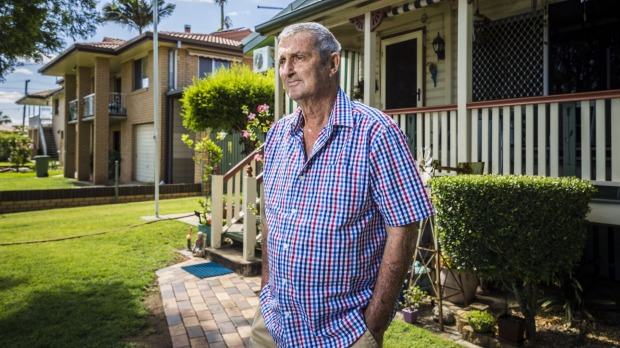
Queensland black lung disease sufferers, mining and health experts will all give evidence Monday morning to a powerful Senate committee investigating the recent re-emergence of the disease in Queensland after 30 years.
Black lung disease is the term used to describe coal workers’ pneumoconiosis, which is caused by prolonged exposure to coal dust.
Queensland is the only state where black lung has re-emerged, despite extensive coal mining in New South Wales and Victoria, as well as Queensland.
It was eliminated from Queensland for 30 years until September 2015, when it was reported in a few paragraphs in an annual report from the Queensland Mines Inspectorate.
“The first case of coal workers’ pneumoconiosis in a Queensland coal miner in 30 years was reported this year,” Queensland’s Mines Inspector Paul Harrison says on page 3 of his report.
“Although I am not suggesting that this particular case is linked to the current dust levels, there has been a significant upward trend over the last two years in average dust exposures for longwall and development mining across most sites,” Mr Harrison reported.
Since then Queensland has five positive cases of black lung disease and “30 to 40” potential cases as mineworkers union , the CFMEU pushes ahead with xrays being checked by US black lung experts, rather than Queensland specialists.
In January 2016 Queensland’s Natural Resources minister Dr Lynham said eight of Queensland’s 14 underground coal mines had been operating at above maximum coal dust levels until 2015.
The Senate Select Committee on Health in Brisbane on Monday will hear evidence all day from witnesses, sufferers, the Queensland Resources Council, health experts and black lung disease experts.
Ipswich coal miner Percy Verrall, whom Fairfax Media interviewed in December 2015 will be among the first to give evidence to the inquiry.
Percy worked at most of Ipswich’s biggest coal mines, beginning at the Tivoli underground coal mine, then Rylance collieries at Ipswich, Oakey’s Acland mine, then to Rhondda Collieries, then to the Haenke Mine.
He began to cough up blood in 2015.
“Last year I was in hospital here at St Andrew’s here in Ipswich nine times with a bad infection,” he says.
“Earlier this year my lung just burst and it bled like anything on my right side.”
His wife had heard him “gurgling” and he collapsed as he began a short walk to the toilet.
He then filled five hospital sick bags with blood.
Also providing evidence will be the Thoracic Society of Australia and New Zealand, occupational lung disease experts from the Royal Australian and New Zealand College of Radiologists and managers of both the Carborough Downs coal mine run by Anglo American Coal and Grasstree coal mine.
Employees from both mines have been confirmed as suffering black lung disease.
Queensland Resources Council chief executive Michael Roche will also speak to the QRC’s submission on the re-emergence of black lung disease.
Senior public servants from the Department of Natural Resources, Mr James Purtill and Queensland Health’s Dr Jeanette Young will also speak at the Senate Select Inquiry.
Community activist group, Stop Brisbane Coal Trains, described the Senate Select Inquiry as “a whitewash”, colourfully describing it as “Queensland’s Watergate”.
Watergate was the name of a US hotel when burglars in 1972 stole documents from the Democrats, which was ultimately linked to the Republican Committee to Re-Elect the President.
President Nixon eventually resigned in August 1974.
There is no suggestion anything similar is involved in Queensland.
